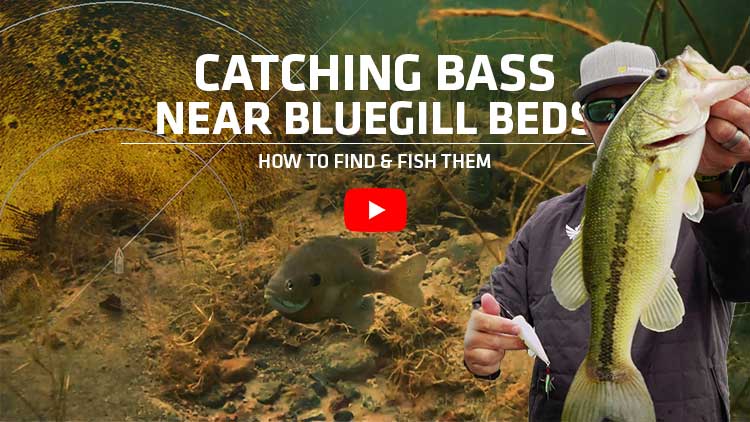How to Find Bass During the Pre Spawn, Spawn and Post Spawn
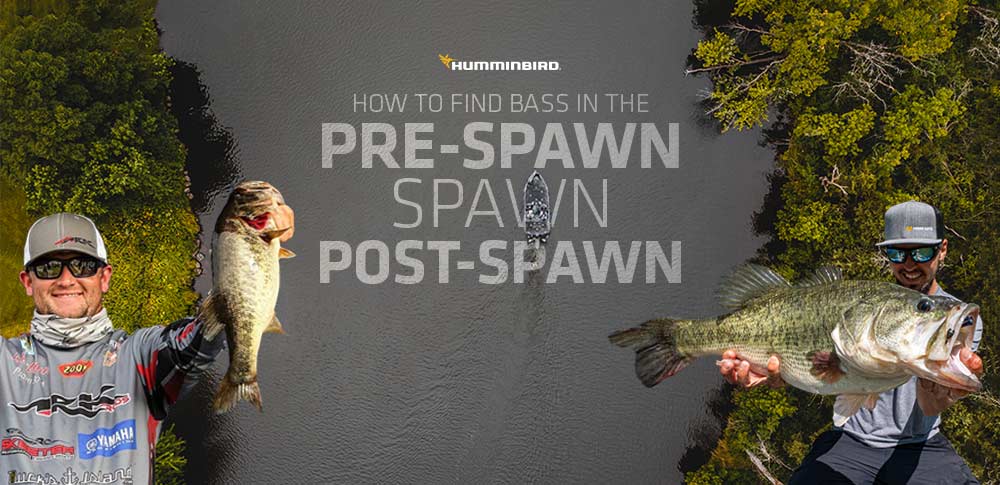
Spring bass fishing is something that all bass anglers look forward to, whether you're a seasoned bass head or a novice. It's almost like an extended birthday or holiday.
If you love spring fishing, you've come to the right place because in this article, we're going to cover where you can find bass and how to catch them during different stages of the spawn and ultimately improve your spring fishing success.
Where to Find Pre Spawn Bass
As Jocumsen explains in the video above, bass tend to "stage" on main lake and secondary points leading into shallow creeks, bays or cuts.
Other popular areas to look are rocky rip rap banks and areas with wood where fish will stage on warmer shallow cover.
An effective way to identify these areas is to use the Shallow Water and Depth Highlight features on your Humminbird fish finder. By highlighting areas, obvious main lake, secondary points, and shallow flats will stand out on your map.

What does it mean when bass are staging?
Staging is when fish are moving towards their spawning grounds and preparing for the seasonal spawn.
During this time, bass will feed heavily as they move shallow. This is the pinnacle of the bass fishing season for many anglers.
Pre-Spawn Bass Fishing Tips
Bassmaster Elite Series pro, Wes Logan shares some of his pre-spawn bass fishing tips.
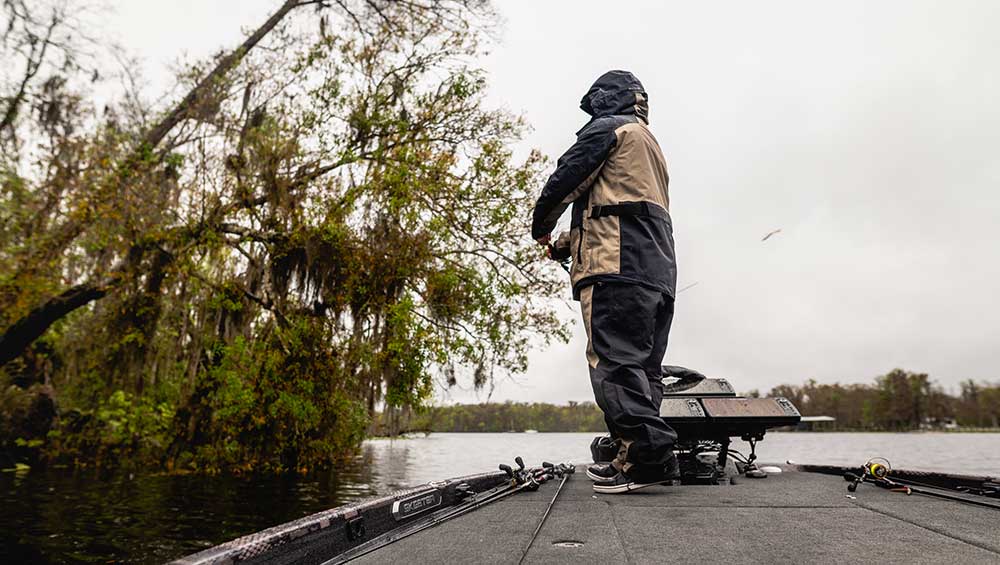
"Typically you're dealing with colder air and water temps, so I like to cover water with my Minn Kota Ultrex® trolling motor and focus on two different types of cover, whether that be grass or rock. With grass, I look for expansive flats with isolated grass clumps."
"I use my Humminbird MEGA 360 Imaging® to find those isolated grass patches and make long casts with a 5/8oz lipless crankbait or 1/2oz vibrating jig. Once I get a bite or two and find a productive area, that's when I mark a waypoint on the spot and slow down my approach."
"In the pre-spawn, fish tend to group up, so I like to make a big circle around the waypoint or area and pick it apart much slower. Boat positioning is key while doing this and that's where I utilize Spot-Lockâ„¢ because I tend to be off the bank on flats or offshore points. I can hold my boat on those areas and pick them apart."
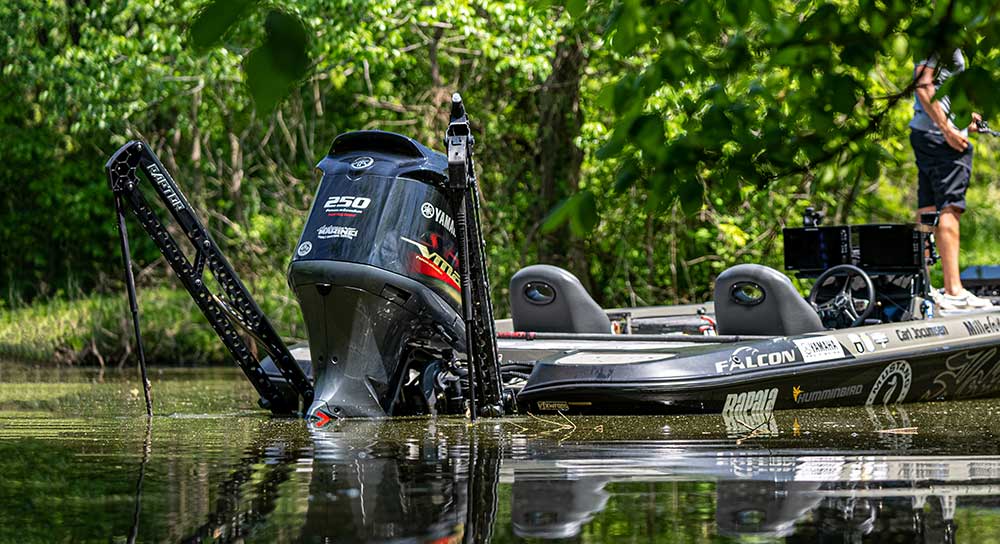
If I'm in shallower water I will deploy my shallow water anchors because they are quieter than using the trolling motor to hold my spot. I mainly use my Raptor shallow water anchors when in depths less than 7ft.
"Another area to focus on is rip rap and chunk rock. These areas hold more heat and serve as a great staging area for pre-spawn bass. I like to hit those areas with a flat side crankbait (6-10ft diver) or squarebill crankbait and typically focus my color choice on red, orange and craw pattern baits." Added Logan.
Learn more about targeting pre-spawn bass near rip rap banks and rock transitions.
Pre-spawn Baits – Lipless crankbait and vibrating jig (grass), jerkbaits, swim jig, shallow crankbaits, spinnerbaits, and other similar lures. A few of the Humminbird and Minn Kota pros share their favorite pre-spawn baits in this video.
Where Do Bass Spawn
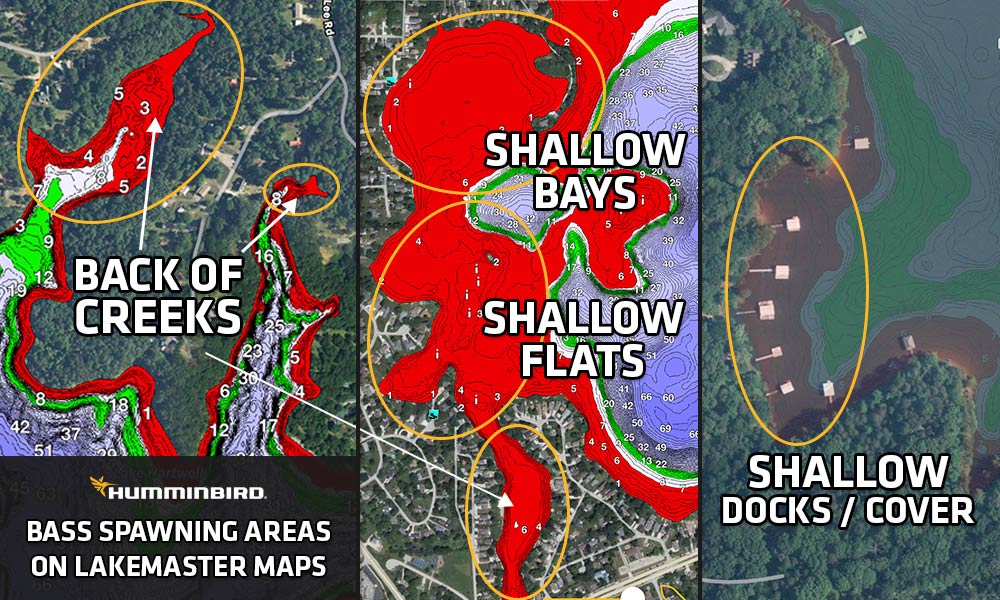
The main areas where you will find spawning bass are in the back portions of creeks, bays, cuts, and other shallow flats. Typically the bass like to find gravel or harder bottom to make their beds on.
They also prefer to have other types of cover nearby, like a fallen tree, dock/pier, brush, and other cover to help protect them from the elements and predators.
When do bass spawn?
It varies on every lake, but bass typically begin to move to the spawning areas when the water reaches the 50s and they begin to prepare their beds and lay eggs in the low-60s to 70-degrees.
Also, pay attention to the moon phase. Bass tend to be more aggressive during a full moon as the water temps rise and the fish begin to move to the shallow spawning grounds.
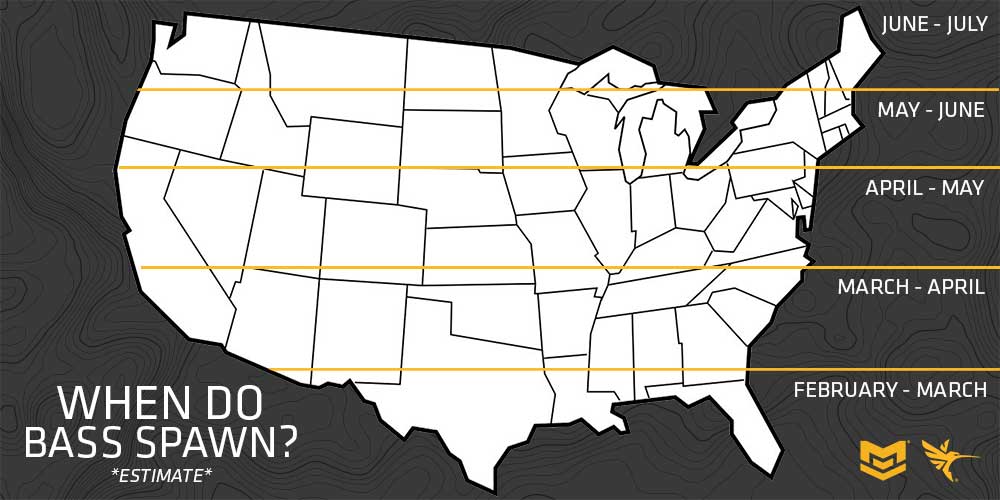
Changing weather and condition can delay or speed up the process. It's important to know that not all of the fish spawn at once or in one area.
See the section below on tips for timing the stages of the spawn.
Where to find warmer water on your lake – Typically shallow water bays, creeks and protected pockets on the North end of the lake will warm the quickest because the sun will rise in the south-eastern portion of the sky in spring, which means the north end will receive the most sunlight throughout the day.
Spawn Bass Fishing Tips
Wes Logan states that he likes to focus on protected areas of the lake, like the bays and creeks like mentioned above, but that's not all.
"During the spawn, the fish like to get out of the wind and tuck into protected areas where they can start the reproduction process, but that doesn't just mean deep into a creek or small bay. I like to focus on main lake areas too, especially around smaller flats with boat docks or other cover like timber or grass." Added Logan.
"Once the water hits mid-50's, I'll check the backs of creeks to see if the bigger fish are spawning first. Start shallow and then check the pre-spawn patterns if you don't run into any fish."
Spawn Fishing Baits and Techniques
"I like to cover water with a swim jig to see if I can spot any followers or fish rolling on the bait to chase it off the bed. From there I'll mark a waypoint and come back and flip a Texas rig on it-and I prefer the Texas rig over a jig because I feel like it gets more bites."
"The fish don't really care to eat, but if you can aggravate them with your bait, you can entice them into biting".
Other baits Wes has tied on are a Horny Toad and weightless stick bait.

The Approach - "Stealth is extremely important during spawn because the fish are more pressured and they spook easily. I like to put my Minn Kota Ultrexâ„¢ trolling motor on a low speed setting and quietly move through the shallow waters."
"My Raptor shallow water anchors are absolutely critical this time of the year. They're extremely quiet in general, but during this time of the year I like to turn my deployment speed on low so that the poles drop into the water slower. I also like to have them halfway deployed while I'm moving through an area so I can quickly and quietly drop them." added Logan.
Where to Find Post Spawn Bass
Bass will typically hang around spawning areas for some time and other will begin to move back out to secondary and main lake points, ditches in flats, ledges, brush piles, and eventually to their summer haunts.
If your lake has shad spawn, you can find schools of bass feeding in the mornings on shallows points.
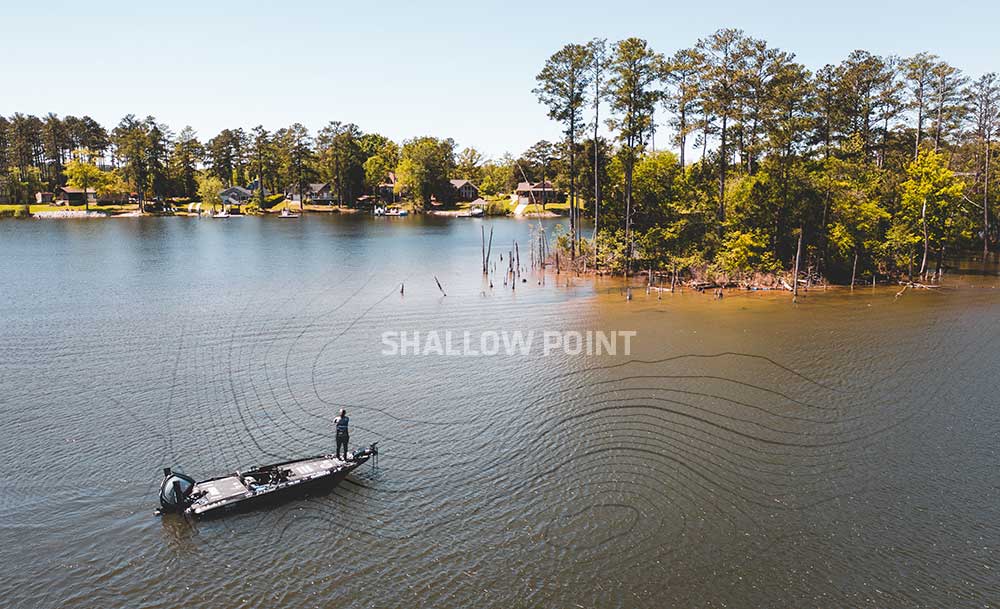
Other great areas to find post-spawn bass are marinas or stretches of docks near spawning flats. The fish love to ambush easy meals near this type of cover.
It's also important to note that there are always some resident fish that hang out in the shallows for longer periods of time and they will feed heavily, making it a fun time on the water. As the bass move out and the panfish move in to spawn, a really effective way to target big bass is near bluegill beds.
Watch Now
Check out this video of how Carl Jocumsen locates and catches bass around bluegill beds.
Post-Spawn Bass Fishing Tips and Baits
Wes Logan likes to start his post-spawn search when water temps reach the high-60s to mid-70s depending on the type of lake, but he starts in the same areas where the fish were spawning and works his way out to eliminate water.
Logan says, "The post-spawn is such a fun time to fish because you have very hungry fish and you can catch them in a variety of ways, whether that be up shallow, mid-depth and eventually out deep."
"I love to focus on burning the bank and targeting shallow rock, grass and brush piles with a swim jig to imitate bluegills. Similar to the pre-spawn, I rely heavily on my MEGA 360 imaging to quickly identify cover out ahead of and around my boat before I reach it, that way I don't spook fish and I can make an accurate cast to the cover" added Logan.
"I also like throwing a jig because it has a bigger profile and the fish tend to want a bigger meal and don't want to spend a lot of energy eating it immediately after spawning." Added Logan.
Shallow Water Post-Spawn Baits – Topwater baits (walking baits, frogs, buzzbaits, etc.), Texas rigged baits (flipping and pitching), jigs, swim jigs, and similar baits.
Moving Deep in the Post-Spawn
"After checking the shallows, I love getting offshore and fishing ledges (steep drop-offs) in the 15-20ft range and deeper brush piles with a big Texas rigged worm, deep crankbait, drop shot, and the other basic offshore baits."
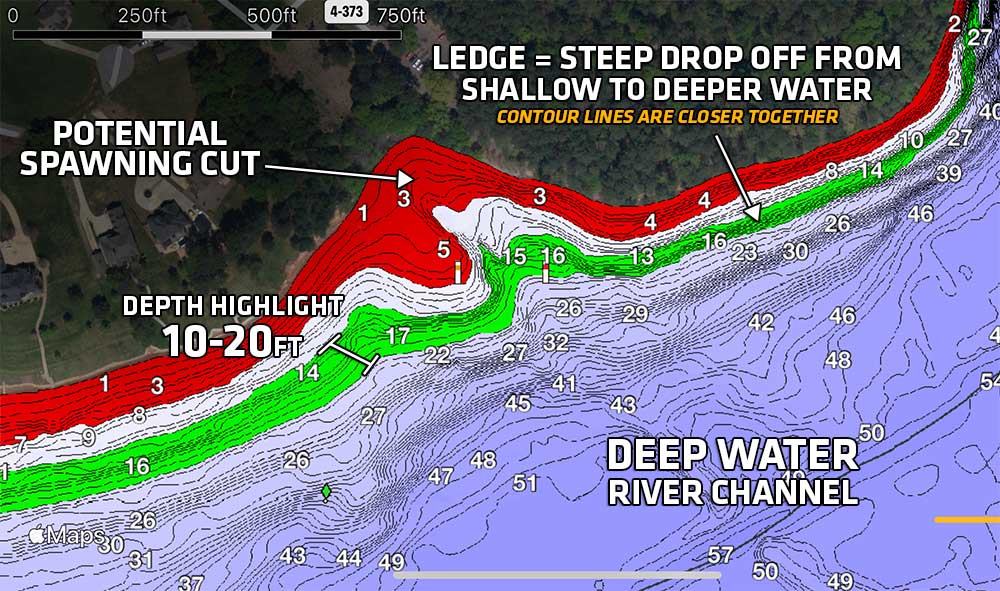
Example of a Ledge
Deeper Water Post-Spawn Baits – Deep crankbaits, drop shot, Carolina rig, football jig, swimbait, and other similar techniques.
Check out this helpful video from TacticalBassin to help break it down further.
Tips for Timing the Stages of the Spawn
It can be hard to gauge stages of the spawn because bass tend to spawn in waves and at different water temperatures. Some lakes have a very short spawning window, leaving bass condensed in one area for a short period of time (sometimes less than a week) and then they are headed to their post-spawn locations.
Another thing to consider is that fish will be in different spawning stages depending on the body of water. If you're on a large reservoir, there may be actively spawning fish in the upper portion of the lake where the water may be dirtier, and at the same time, fish down near the clearer water by the dam may still be in a pre-spawn behavior.
This can be a challenging thing for anglers, but it can also be very exciting because it gives you the option to chase pre-spawn or post-spawn fish depending on your body of water.
Wes Logan adds, "I like to focus on stained water first because it suits my fishing style, but these areas can be volatile and easily affected by weather, runoff, and other conditions. Typically, I find that the clearer section of the lake tends to be more consistent based on weather and conditions."
"I've noticed that the biggest fish tend to spawn first. It could be that they're smarter fish and they know that the (fishing) pressure is coming. Once water temps hit 55 to 56 degrees, I'll check the backs of creeks to see if bigger fish are spawning first. If not, I'll go back to a pre-spawn pattern."
"Once it's deep into the spawn, I will check post-spawn patterns for the bigger, hungry fish." Added Logan.
